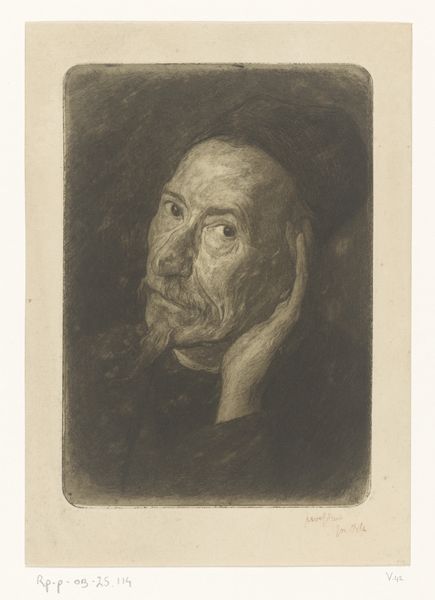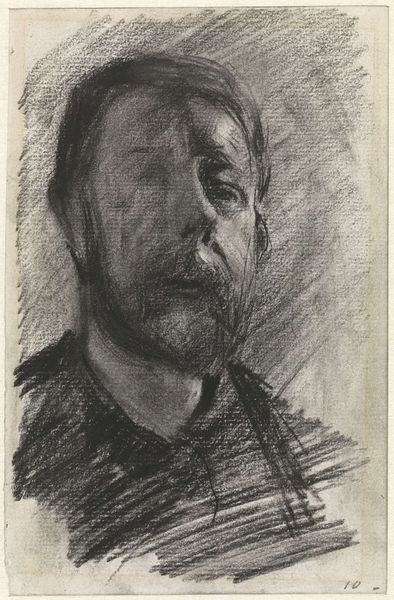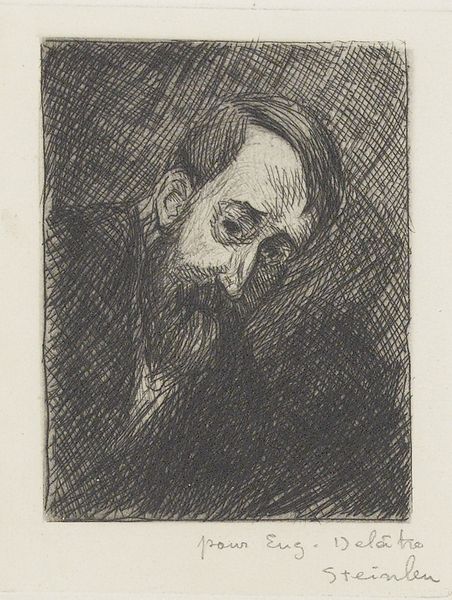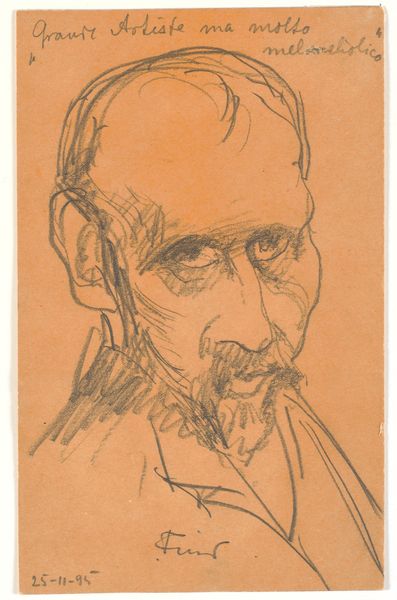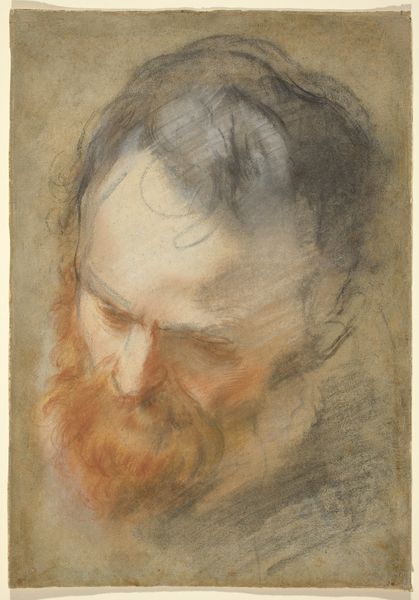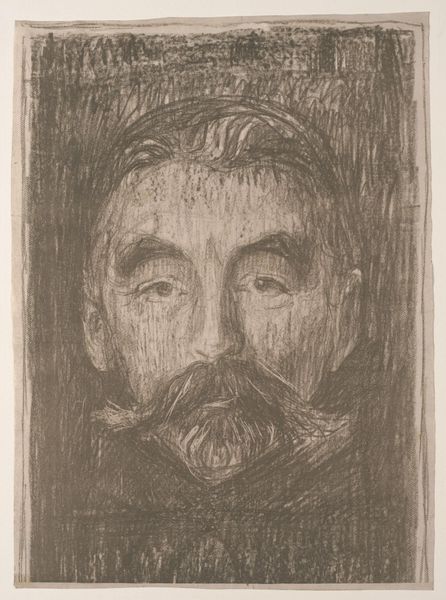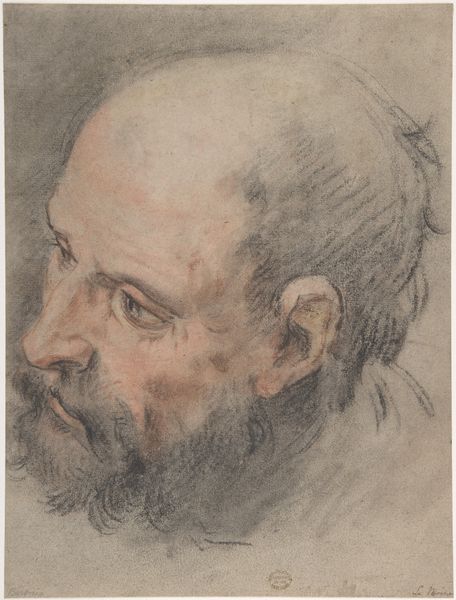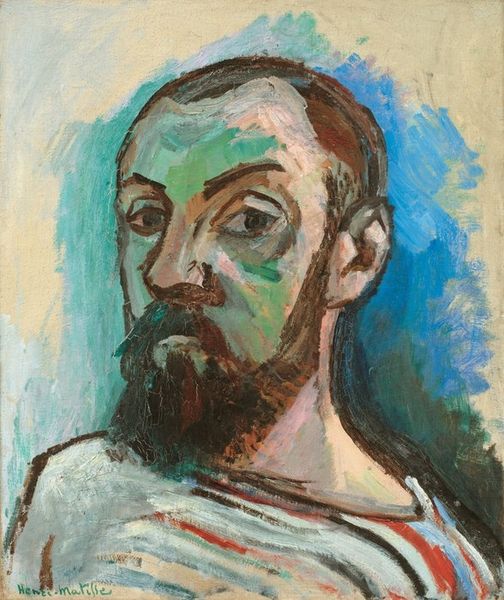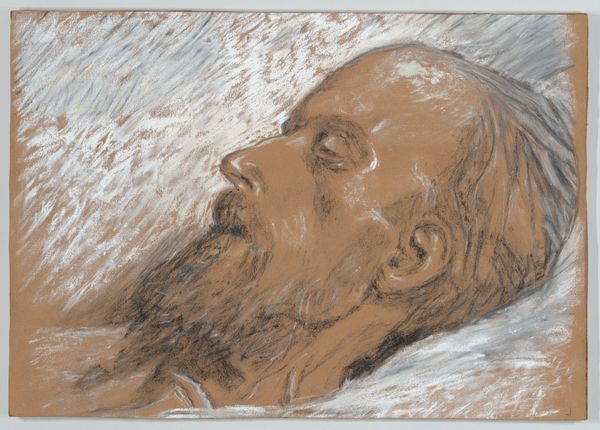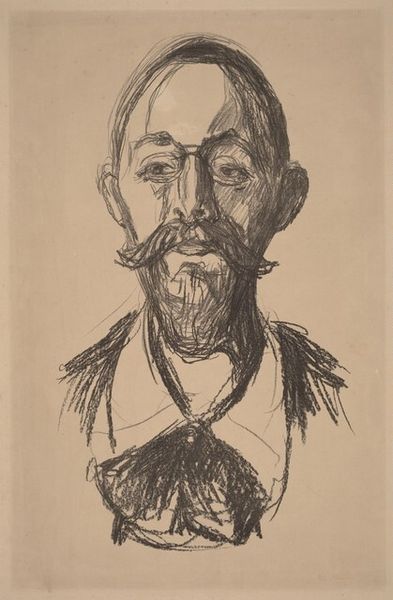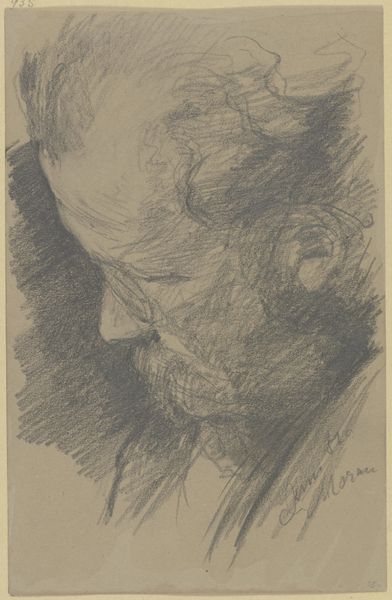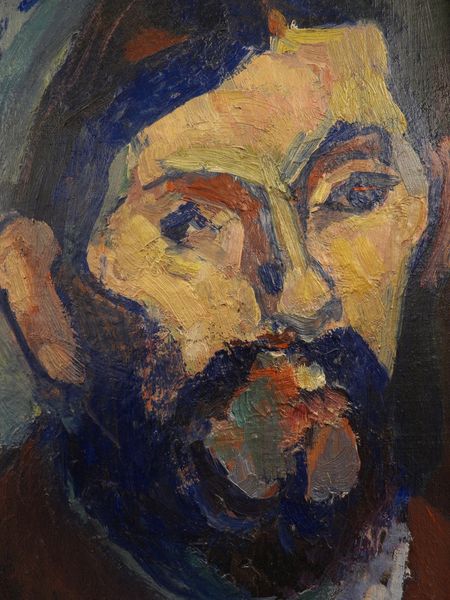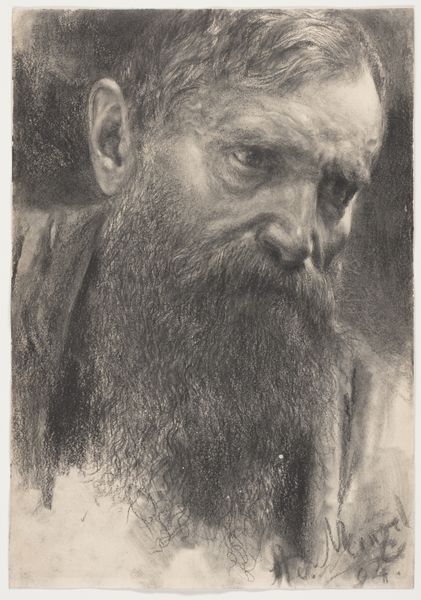
drawing, graphite, charcoal
#
portrait
#
drawing
#
self-portrait
#
graphite
#
portrait drawing
#
charcoal
Dimensions: 332 mm (height) x 216 mm (width) (bladmaal)
Editor: This is Niels Larsen Stevns’ self-portrait from 1902-1903, rendered in graphite and charcoal. The stark contrast gives it a very intense feel. What do you see when you look at how the drawing was made? Curator: The first thing that strikes me is the directness of the materials. Graphite and charcoal are relatively inexpensive, accessible mediums. Consider the implications of an artist choosing these materials for a self-portrait during this period. Was it a matter of financial constraint, or was there a conscious decision to reject more 'refined' media? How might that choice reflect Stevns’s view of his own labor as an artist? Editor: That’s interesting, I hadn't thought about the choice of materials being a deliberate statement. Does the drawing technique suggest anything about his process? Curator: Absolutely. The visible strokes and smudging indicate a process of layering and reworking. It doesn’t aim for a polished, idealized image. Instead, the emphasis is on the process of *making*. We could ask, what’s the role of imperfection, the rough and raw in conveying sincerity? Editor: So it’s less about the finished product and more about understanding the labor and choices that went into creating it? Curator: Precisely! And how those choices challenge established hierarchies. Is this drawing just a study, a 'lesser' form of art compared to a painting? Or is it actively questioning the value placed on different types of artistic labor and materials? Editor: This has given me a lot to think about. I didn’t expect to consider a simple self-portrait in such a socio-economic light! Curator: Exactly! Art doesn't exist in a vacuum. The materials and the way they're used always have something to say about the broader context of production and consumption.
Comments
No comments
Be the first to comment and join the conversation on the ultimate creative platform.
